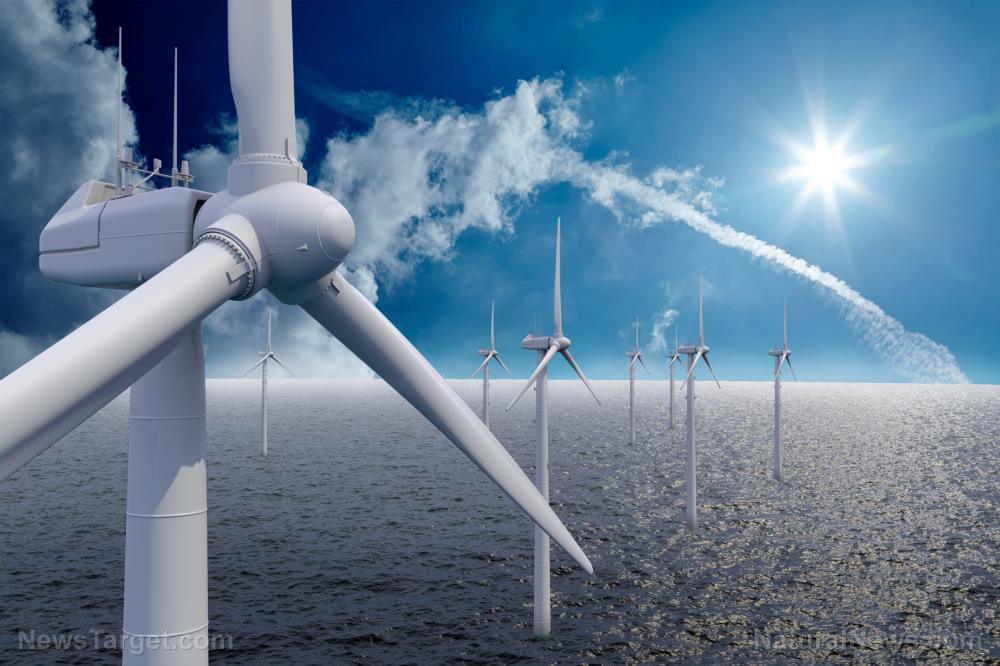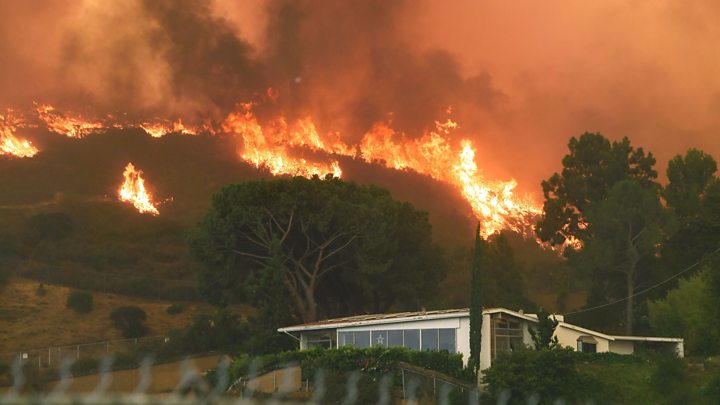Wind turbine blades could account for more than 43 million tons of waste each year by 2050
03/06/2023 / By Arsenio Toledo

It is estimated that by 2050, wind turbine blades could account for more than 43 million tons of waste annually.
Around 85 percent of a typical modern wind turbine can be recycled. The majority of a wind turbine’s body is made mainly of metal which can easily be broken down and recycled into other goods. The notable exception to this is the wind turbine’s blades, which last around 20 to 25 years before they need to be replaced.
Wind turbine blades are made to continuously spin for 20 to 25 years, sometimes in inclement weather conditions. Their manufacturing makes them exceptionally durable and also extremely difficult to recycle.
Jonathan Naughton, a professor of mechanical engineering at the University of Wyoming and director of the Wind Energy Research Center, noted that wind turbine blades are made of composites containing various high-strength fibers set into a resin matrix that binds them all together.
This mixture of composite materials is what makes the blades exceptionally difficult to recycle. They can’t just be broken down and recast into fresh materials.
This doesn’t even take into account the fact that the size of the blades – often spanning up to 300 feet long – makes them even more difficult and expensive just to disassemble and transport to recycling facilities. They can often be between 120 to 300 feet long and weigh around five tons, with the largest being as long as a football field – 360 feet – and weighing up to 20 tons.
Naughton noted that research is ongoing to find ways to make them more recyclable, and some manufacturers have already committed to developing fully recyclable blades in the future. But it could still be a while before those are deployed across all new turbines.
“We recycle a lot of the rest of the turbine – the steel in the turbine, the copper – all those kinds of things are infinitely recyclable,” said Naughton. “The blades are the last remaining piece we have to get better at.”
Until these recyclable blades arrive, these massive, unrecyclable components turn into an ever-growing waste issue.
Currently no scalable tech is capable of recycling turbine blades
According to a 2017 study published by Waste Management, the world’s wind industry could end up producing over 43 million tons of blade waste annually by 2050, with the U.S. and Europe accounting for 41 percent of that waste. (Related: EV owners complain about “logistical nightmare” caused by lack of charging stations.)
Certain projects take a limited amount of used blades to be repurposed. In Spain, wind engineering company Siemens Gamesa’s RecycleBlade project has repurposed several blades into bike sheds and is currently using new advanced resins to enable some of the raw materials on the blade to be easily recovered.
In the Netherlands, repurposed blades were turned into playgrounds. In Denmark, they were turned into bike shelters and stylish garden and street furniture. In Western Poland and County Cork, Ireland, they were turned into small footbridges with an estimated life span of 60 years.
But these projects only have a limited impact on the overall blade waste situation, and there are currently no scalable, cost-effective ways to recycle blades, which means almost all unusable blades end up going into landfills.
In 2019 alone, the City of Casper Regional Landfill in Wyoming accepted about 1,500 wind turbine blades for disposal. Mike Bratvold, special waste supervisor for the city, noted that the landfill is no longer accepting additional blades due to the lack of space.
“We have rate codes and everything so that we’re capable of taking blades, but we don’t currently have any projects that are bringing us blades,” he said.
Bratvold added that used turbine blades do not discharge potentially toxic substances into the ground, which is why they are not put in the lined landfill pits where a lot of municipal solid waste goes. They are classified as construction and demolition waste.
Learn more about America’s energy infrastructure and needs at Electricity.news.
Watch this clip of noted environmentalist Greta Thunberg, who joined a protest in Norway to oppose the construction of wind turbines.
This video is from the PureTrauma357 channel on Brighteon.com.
More related stories:
Wind farms pose health risks to local residents, but governments around the world don’t care.
Attacks on US power grid SURGED in 2022 and are likely to keep increasing this year.
Solar and wind can’t replace fossil fuel, points out economist Peter Hartley.
Sources include:
Submit a correction >>
Tagged Under:
electricity, energy, environment, landfills, power, power grid, recycling, renewable energy, sustainability, technology, turbine blades, wind energy, wind turbine blades, Wind Turbines
This article may contain statements that reflect the opinion of the author
New title
COPYRIGHT © 2017 FACTCHECK.NEWS
All content posted on this site is protected under Free Speech. FactCheck.news is not responsible for content written by contributing authors. The information on this site is provided for educational and entertainment purposes only. It is not intended as a substitute for professional advice of any kind. FactCheck.news assumes no responsibility for the use or misuse of this material. All trademarks, registered trademarks and service marks mentioned on this site are the property of their respective owners.



